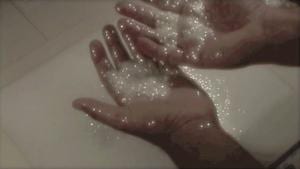Despite what recent, white-washed representations of our community may claim (I’m looking at you, Grid), life as a gay man residing in Toronto is not all high-living and bow ties. Many Asian queers know this. Not just because of a complicated history of being marginalized and sometimes fetishized by other homos, but also because they face the double whammy of being a minority within a minority.
This was particularly isolating in the days preceding modern resources like online social and support networks, a period examined by Andil Gosine and the Canadian Lesbian and Gay Archives (CLGA) in their upcoming exhibition Khush: A Show of Love.
From 1987 to 1992, Khush was an integral force in uniting and supporting South Asian queers in Toronto. The organization provided a safe space for social interaction within the city and acted as a symbol of encouragement to South Asian gays and lesbians living outside of Canada. During its brief but important tenure, the group gave birth to the Alliance for South Asian AIDS Prevention, as well as Desh Pardesh, a cultural arts festival that showcased early works from seminal creators like Touch of Pink director Ian Rashid and author Michael Ondaatje.
Gosine’s interest in the Khush phenomenon began while sorting through materials donated to the CLGA by Khush founder Nelson Carvalho.
“I felt it was really important to recognize Khush’s existence,” says Gosine. “A lot of people, particularly young queer South Asian people, have no idea that there was this very active gay organization for South Asians in Toronto.”
As Gosine foraged through Carvalho’s files and recordings, he became fascinated by the reams of correspondence the organization received during its relatively short lifespan.
“These extraordinary letters were written to Khush from people all over the world,” he says. “There’s a lot of loneliness and longing in the letters. For these people, the existence of Khush was a beacon of light. The idea of its existence was powerful enough.”
“Remember, this was before the internet took off. It’s so easy to connect with a gay man now, and there’s an endless number of forums, but there’s something really beautiful in those letters that cyberspace and chat rooms don’t capture with that same kind of feeling.”

 Why you can trust Xtra
Why you can trust Xtra


